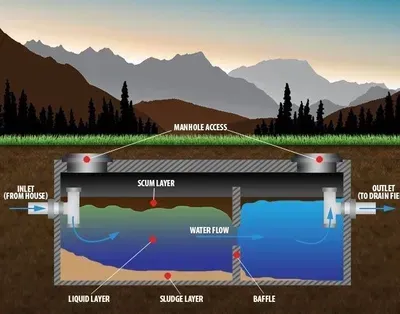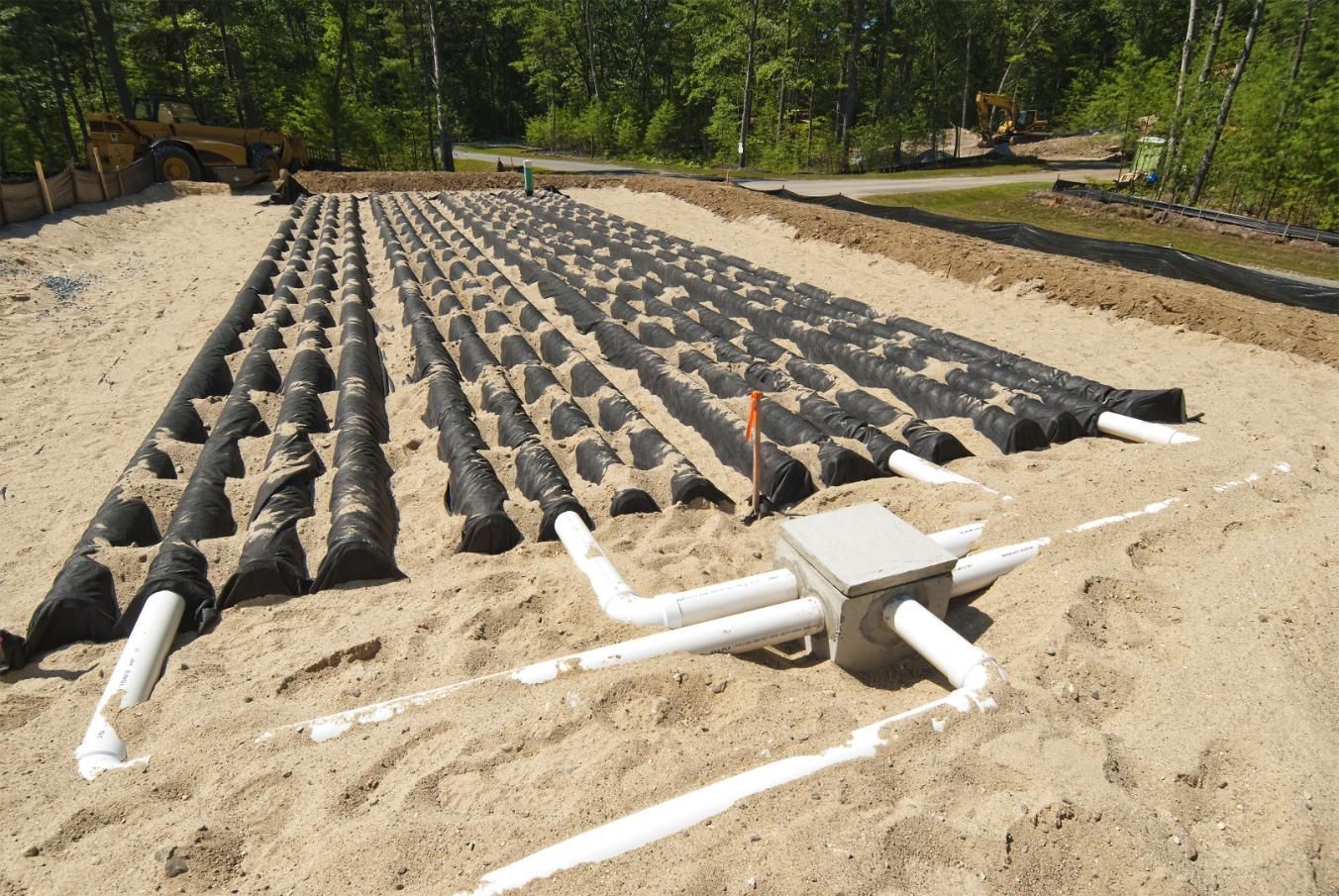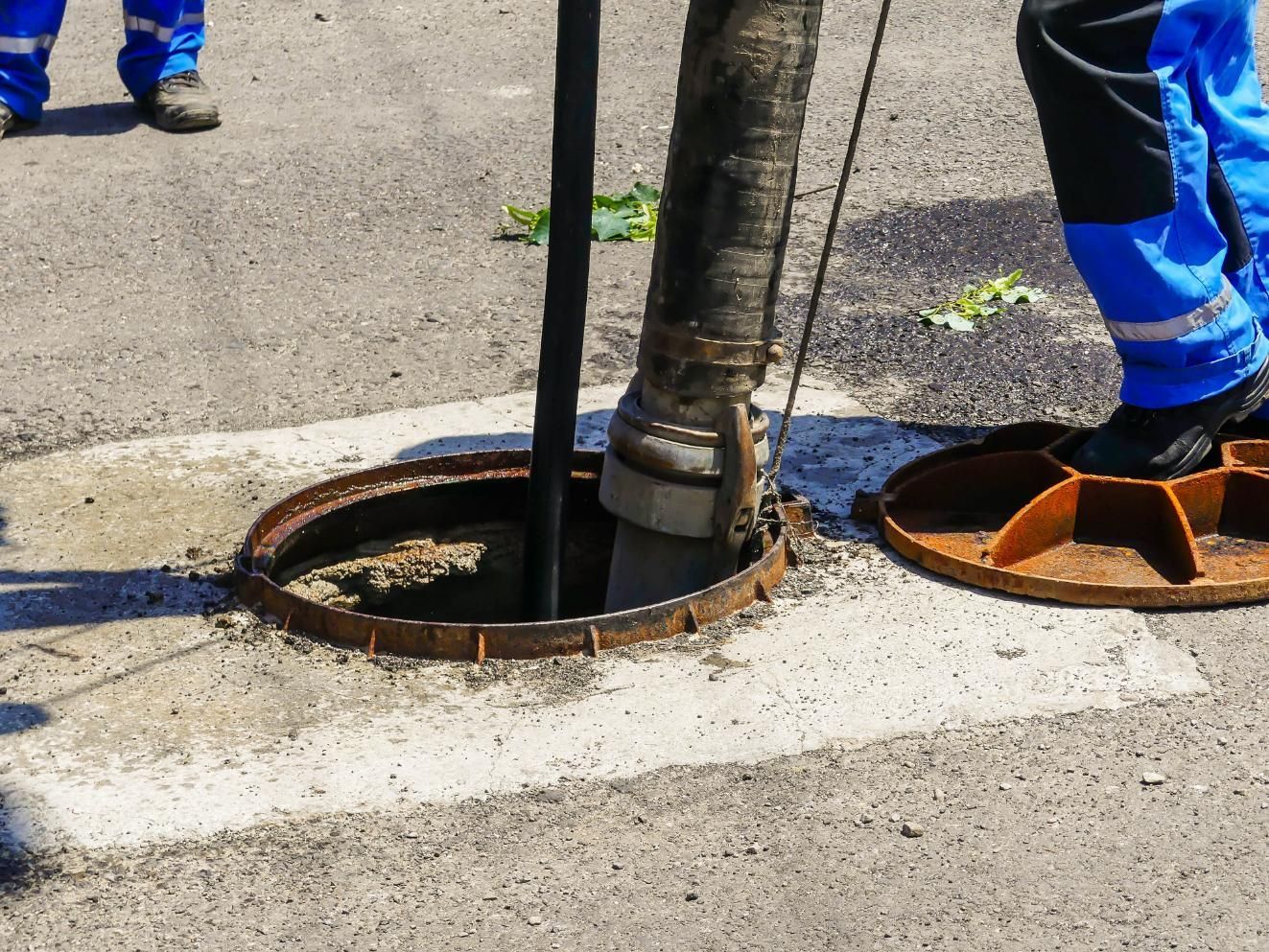Septic Pumping
General Info on septic Systems and pumping
Any solid or liquid waste that enters the drainage system of the home through a toilet, sink, or any other connect drain is typically expelled into the municipal wastewater system. For those with homes connected to a municipal wastewater system, you don't need to worry about regular maintenance because these tasks are handled by the local government.
However, not every home is connected to a municipal system. According to the EPA, more than 20 percent of American households use a septic system to treat household waste. Septic systems are composed of two primary parts: a septic tank and a soil absorption system, commonly referred to as a drain field or a leach field.
The upkeep and maintenance of these systems falls to the homeowner. Without regular inspection, treatment, and pumping, the septic system can back up into the home, overflowing through the toilets, sinks, and other drains. Leaks and clogs can also form if the tank isn't properly maintained. Use this guide to find out exactly how a septic tank works, so you can diligently complete all necessary maintenance.
What Is a Septic Tank?
A septic tank is essentially a watertight tank that is buried underground. It's designed to receive and partially treat waste from the home, allowing heavy solids to settle to the bottom of the tank, while grease, fat, and other light solids float to the top. Bacteria in the tank treat the solid waste, but the liquid waste or effluent, is expelled through an outlet valve and released into a leach field for further treatment.
What Is a Leach Field?
After leaving the septic tank, the liquid waste, known as effluent, typically flows into a soil absorption system for further treatment. The waste flows through a filtration material, like a gravel-filled trench or perforated plastic pipes, then seeps down into the soil where it can be broken down by microbes. The area where the liquid waste is filtered is called a leach field or a drainfield.
If your gutter system drains into the leach field, it's recommended to redirect water to prevent flooding. Additionally, trees, bushes, etc. with deep growing roots should not be planted on a leach field because the roots can damage the filtration medium. However, it is a good idea to grow grass on the leach field to help reduce flooding and to prevent erosion.
How Does a Septic Tank Work?
The primary purpose of a septic tank is to collect and treat raw domestic waste from the home. The basic process through which the system accomplishes this task starts by separating heavy solids, light solids, and effluent. Heavy and light solids are treated and broken down with bacteria in the tank, while the effluent is expelled from the septic tank. The effluent enters the leach field, where it flows down through a filtration material and into the soil. Microbes in the soil feed on the waste, finishing the treatment process.
- Waste and waste water run out of the home and into the septic tank.
- When waste enters the septic tank, heavy solid waste sinks to the bottom. Lighter solid waste, like oil and grease, float on the top. The tank has a T-shaped outlet that prevents the sludge on the bottom of the tank and the scum floating on the top from exiting the septic tank.
- The solid waste remains in the tank where it is broken down by bacteria. Periodically, the tank does need to be pumped out to remove the collected waste. This process should be performed by a septic system treatment professional about once every two to five years, depending on the frequency of use and the size of the septic tank.
- Liquid waste, known as effluent, is free to exit the tank through the T-shaped outlet valve.
- The effluent then enters the leach field, where it flows through a filtration medium. Depending on the type of septic system, the filtration medium can vary, though the most common option is a trench filled with gravel or rocks, known as a conventional system.
- After flowing through the filtration medium, the effluent seeps into the ground beneath the leach field where microbes continue to treat the liquid waste as it is dispersed throughout the soil.
Types of Septic Systems
There are many septic system types differentiated based on the method of wastewater and effluent treatment, including conventional, chamber, drip distribution, aerobic treatment unit, mound, recirculating sand filter and others.
Conventional
The most common option for a standard residential home is a conventional septic system consisting of a septic tank and a gravel or stone drainfield. Solid waste gets trapped in the septic tank, while the liquid waste or effluent flows out to a shallow underground trench filled with stone or gravel. The effluent is filtered down through the stone and then undergoes further treatment by microbes in the soil below the trench.
Chamber
A chamber septic system drainfield relies on a series of connected plastic chambers instead of a gravel or stone trench. The waste flows into the septic tank, where the solid waste sinks to the bottom of the tank. Effluent or liquid waste flows out of the tank into a distribution box that redirects the waste into one of the plastic chamber systems. The effluent is then filtered out through numerous small holes in the chambers. Microbes in the soil finish the treatment process as the effluent seeps into the ground below the drainfield.
Drip Distribution
Drip distribution systems use multiple lateral drip tubes that are buried within the top six to 12 inches of soil. Due to the shallow installation depth, drip systems don't require a soil treatment mound, like mound septic systems, but you do need to install a dose tank after the septic tank for the timed dose delivery of wastewater to the drip absorption area.
Aerobic Treatment Unit
You can use an aerobic treatment unit (ATU) in place of a standard septic tank. This system costs more, but it allows you to inject oxygen into the septic treatment tank to increase aerobic bacterial activity and speed up the treatment process. ATUs are ideal for homes with smaller lots or inadequate soil conditions for a full leach field.
Mound
Sometimes the conditions around the home can affect the type of septic system that you can use. If the area has high groundwater or shallow bedrock, then you can construct a sand mound on top of the soil where you can install a drainfield trench. The waste from the home flows into the septic tank, then the effluent is released into a pump chamber where it is pumped to the mound in prescribed doses. The effluent is treated as it is discharged into the trench and filters through the sand before being dispersed into the soil.
Recirculating Sand Filter
A recirculating sand filter is similar to a mound septic system in that the effluent is released from the septic tank into a pump chamber, where it's pumped to the sand filter. The sand filter is typically a PVC-lined box or a concrete box that is filled with sand material. Effluent is pumped through pipes at the top of the filter, allowing it to flow down through the sand. It then exits the filter and is released into a leach field system for dispersal.
In general, a septic tank should be inspected every 1 to 3 years and pumped every 3 to 5 years. The frequency of pumping the septic tank depends on the tank size, number of people in the household, habits of water use as well as the amount of solids accumulated in the tank. Some alternative systems that are more complex may require more frequent inspection or pumping. If you are unsure, ask your local septic system professional. A septic tank effluent filter may also require frequent maintenance and should be included in the inspection and maintenance activities. It is important to save your system’s yearly schedule or maintenance records.



